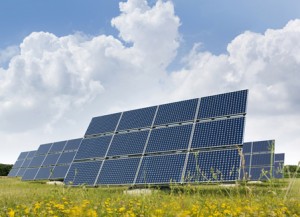IEEFA Report: P.R. can get 40% of its electricity from renewables by 2028


Transitioning into renewable energy will require modernization of generation, transmission, and distribution as well as strong regulatory oversight, according to the report.
The Institute for Energy Economics and Financial Analysis published a report describing how Puerto Rico can get 40 percent of its electricity from renewable resources by 2028.
The report, published with the Puerto Rico Institute of Competitiveness and Sustainable Economy (ICSE-PR), sees the U.S. commonwealth relying on renewables for 50 percent on its electricity demand by 2035 and 100 percent by 2050.
The report— “Toward Electric System Sustainability in Puerto Rico” —emphasizes the importance of proper political oversight over the Puerto Rico Electric Power Authority, which has been plagued for years by difficulties and which stumbled badly in the aftermath last year of Hurricane María.
A modernization program in the long-term interest of Puerto Rican households, businesses. and the economy as a whole.
“The transformation of the Puerto Rico energy system requires not only physical changes to generation, transmission and distribution but strong regulation to ensure successful implementation,” said Tomás J. Torres, executive of ICSE-PR.
“A strong, independent regulator is needed to implement a comprehensive planning process and provide certainty to consumers and investors as the energy system is modernized,” Torres said.
Torres authored the report with Cathy Kunkel, an IEEFA energy analyst who has closely followed the electricity crisis in Puerto Rico, where electricity still has not been restored in some parts of the island almost six months after Hurricane Maria.
“This paper prioritizes the growth of renewables and distributed energy in a grid rebuild across Puerto Rico that would be complemented by highly-efficient generation,” Kunkel said. “Our research emphasizes the importance of having strong regulatory guidance from the Puerto Rico Energy Commission.”
Kunkel noted that Gov. Ricardo Rosselló’s administration has waged a campaign to eviscerate the commission in favor of politically driven policies that lack transparency and protect a status-quo dependence on fossil-fuel imports.
“Rosselló seems intent on establishing a regulatory system committed to approving certain ill-defined privatization transactions,” Kunkel said. “Such a move would simply codify deals that may not meet professional standards and would only perpetuate a political culture that has hobbled the island for too long.”
The report outlines a viable electricity modernization program for Puerto Rico that would be in the long-term interest of Puerto Rican households, businesses, and the economy as a whole.
The paper outlines how Puerto Rico can tap renewables for 40 percent of its electricity requirements by 2028 by taking certain policy steps that include:
“Prioritizing a resilient approach towards the development of renewable energy, demand response and energy efficiency, in lieu of the traditional approach on development of new fossil fuel infrastructure.”
“Updating the 2016 integrated resource plan which was approved by the Puerto Rico Energy Commission, with the participation of key stakeholders.”
“Retiring PREPA’s old, inefficient oil-fired units and partially replacing that capacity with more flexible and efficient units that can facilitate the integration of renewable energy into the grid.”
“Maintaining strong, independent regulation by the Puerto Rico Energy Commission. The Energy Commission has the legal authority to develop a long-term vision for the island’s electrical system and to oversee the necessary transformation.”














This article is trying to retain the obsolete idea that all energy must be owned by and/or so well controlled and regulated that it perpetuates the best political-economic theory while eliminating the facts of human nature. It will always fail when individuals find the way to run their own system or a mini-GRID with neighbors that does not need a.c. current.
“As the electricity system is de-carbonised through the introduction of increasing amounts of intermittent generation, Of course the $64,000 question is how much intermittent renewable generation IS decarbonising generation and how much the intermittency is actually leading to an INCREASE in carbon emissions as gas sets ramp up and down madly, and coal sets are kept on hot standby, ready to cover for the shortfalls in renewable” energy production. The only real metric is to look for overall reductions in fossil fuel burnt per unit electricity generated globally, as renewable energy usage rises. To date the data suggest that the impact is simply one of increased cost: specific global emissions by the electricity sector remain broadly unchanged, whilst the energy and emissions costs of building renewable energy solutions have risen with its adoption.